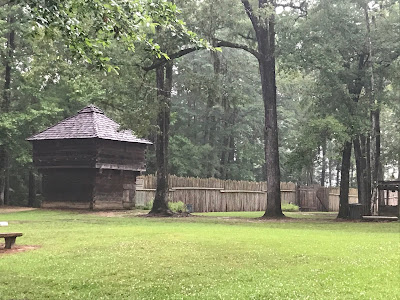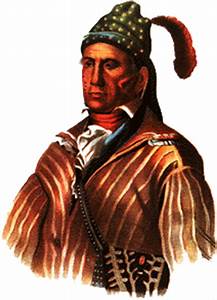After the tragic death of George Floyd and the protests which erupted across America in the following days, we in America are currently obsessed with matters of race. The topic of race arose in our forthcoming book 101 Fighting Celts: From Boudicca to MacArthur. Those of Celtic descent may, at first, seem to be not merely white but even pale white. But this can be misleading.
 |
| Larry Bird Born 1956 |
Celtic people are notoriously passionate and inclusive. If a Scottish man marries a Chinese woman she may well dress in a tartan and learn to cook steaming haggis. Their offspring will be Sino-Celtic. There is a long historical precedent for the expansion of the Celtic clans through intermarriage. And one of the best examples is the life of the Fighting Celt William Weatherford whose most notorious battlefield in Alabama -- Fort Mims -- I just visited (see also...https://americanconservativeinlondon.blogspot.com/2020/03/invading-alabama.html). This is his chapter from 101 Fighting Celts...
Both American Native
and Celt, your talons
were sharp and crimson.
(Haiku by Stuart Laycock)
William Weatherford, known by some accounts as Red Eagle, was born in 1781 in Coosada in what is today Alabama. While many with Celtic blood in them, such as Andrew Jackson, fought Native Americans, others like Weatherford were part of Native American culture.
His father, Charles Weatherford, was a red-headed Scot, while his mother, Sehoy III, was of mixed European and Creek origin. His father was a successful trader, and young Red Eagle acquired a plantation and was a slave owner. With a foot in both camps, Weatherford learned to ride and hunt. His accomplishments as a horseman would later save this life. The Creeks were a matrilineal society, and Weatherford became a leader among his tribe.
 |
| Tecumseh 1768 - 1813 |
Some Creeks, known as Red Sticks, were moved by Tecumseh’s message, while others sided with the American settlers. Weatherford was, perhaps, radicalized by Tecumseh’s message.
 |
| Fort Mims Alabama |
 |
| Fort Mims (Replica) Alabama |
At the Battle of Calabee Creek, Weatherford engaged a unit of Georgia militia led by General John Floyd. Neither side gained a decisive victory, but Weatherford soon realized that he was facing overwhelmingly superior numbers of American forces.
On November 9, 1813, Jackson won a significant victory at the Battle of Talladega. Over three hundred Red Stick warriors were slain.
 |
| Old Hickory meets William Weatherford "I am in your power" |
One of the most dramatic incidents in Weatherford’s adventurous life occurred shortly thereafter. Weatherford walked into the American camp and surrendered to his enemy. On being introduced to Andrew Jackson, he declared simply, “I am in your power.” Impressed by the bravery of this Native American and Fighting Celt, Old Hickory chose to pardon Weatherford.
 |
| Andrew Jackson Statue Hermitage, Nashville, TN |
Weatherford lived peacefully on his plantation in Alabama until his death in 1824.
 |
| Invading Fort Mims, Alabama! |
101 Fighting Celts: From Boudicca to MacArthur is coming soon...!
You can find signed copies of our books at these web sites...
!
Or regular copies on Amazon...
Or on Kindle...
Listen to my interview with Bob Cudmore...http://bobcudmore.com/thehistorians/tracks/ChristopherKelly(August2017)(29)(mp3).mp3
And my interview...www.thebook-club.com/blog/bookshelf-interview-with-christopher-kelly
And my most recent interview...http://www.wbur.org/hereandnow/2018/08/17/america-invaded-christopher-kelly




No comments:
Post a Comment